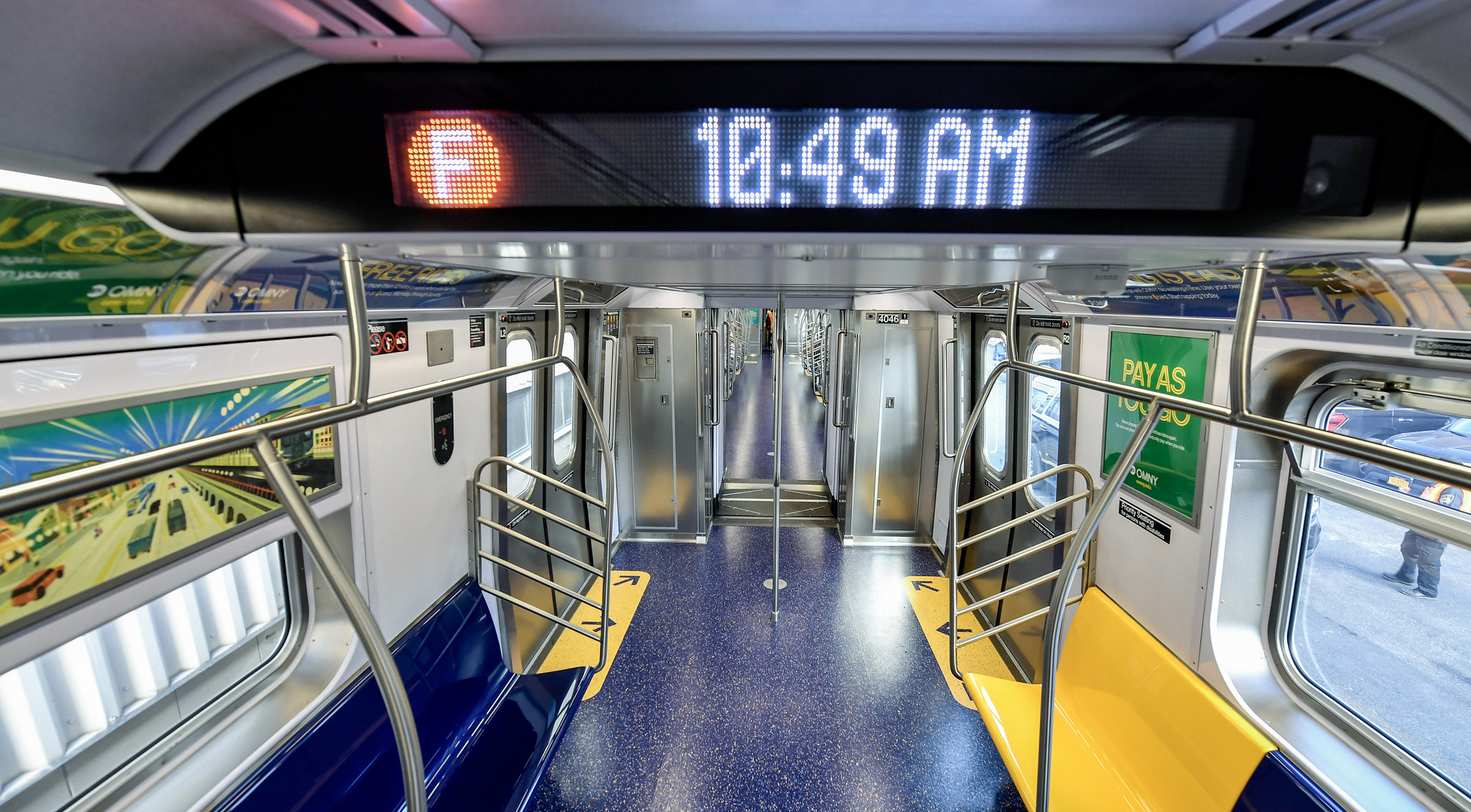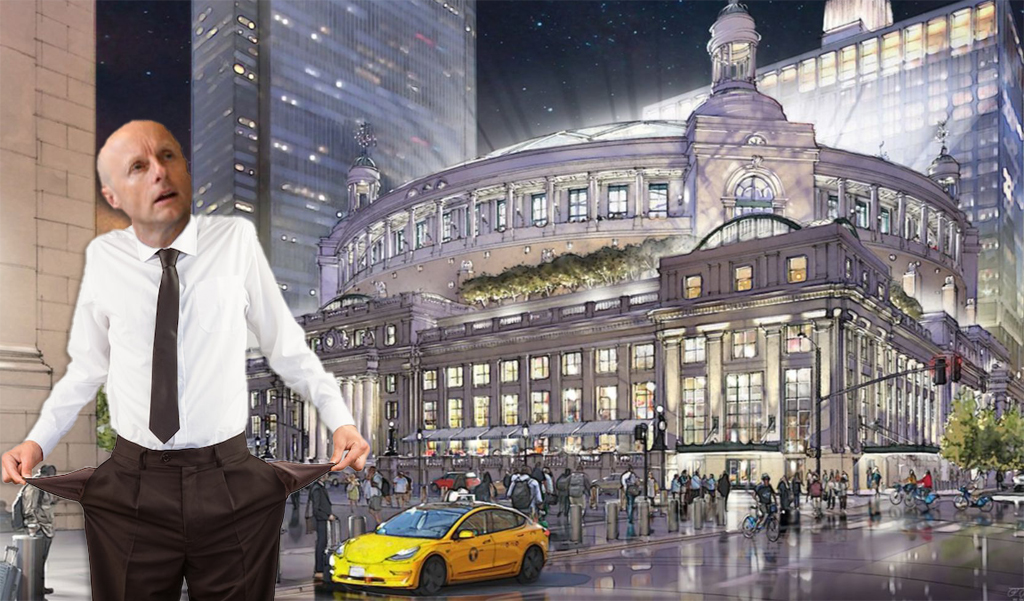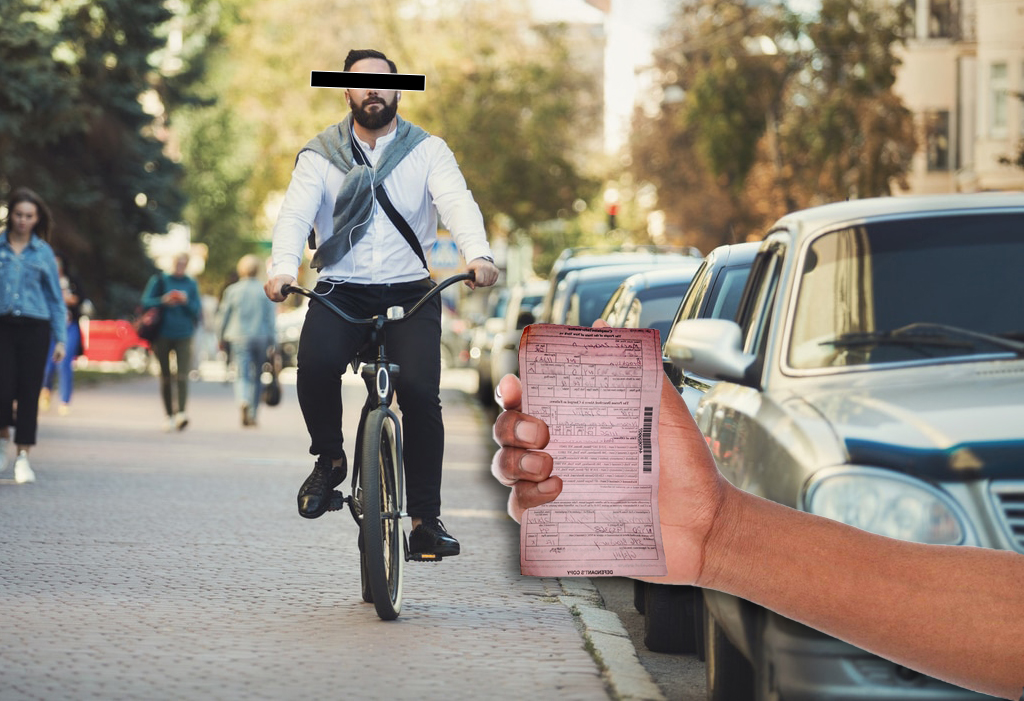Drivers are purposefully covering their license plates at an alarming and rising rate, according to new MTA bridge and tunnel crossing data that calls into question the NYPD's paltry response to the widespread illegal practice.
MTA toll gantries snapped 32,313 "maliciously obstructed" plates in November 2022 — a nearly 200-fold increase from 2017, according to the data, which was obtained by through a Freedom of Information Law request by the civic organization BetaNYC and shared with Streetsblog.
Drivers "maliciously" cover their plates to prevent toll gantries as well as speed, bus lane and red light enforcement cameras, from being able to read them. The dangerous trend threatens to dismantle the city's efforts to hold up traffic laws, according to transportation advocates.
"This reflects a breakdown in public order," said Danny Pearlstein of Riders Alliance. "The success of automated enforcement, both of traffic laws and of toll collection hinges on universal respect to the idea that driving is a privilege and requires a license to get behind the wheel and a readable license plate on the vehicle."
More than 900,000 vehicles cross the MTA's seven bridges and two tunnels on an average day, and around 95 percent of drivers use E-ZPass to pay to cross — including many whose plates are obstructed, likely to evade safety enforcement cameras rather than bridge and tunnel tolls. The data only covers drivers who don't use an E-ZPass to pay their tolls, in which case the MTA snaps a picture of their plate and sends a bill in the mail.
But the growth in covered plates is evident: In January 2017, there were just 186 cases of unreadable plates that the MTA labelled "maliciously obstructed," out of 9,783 total — less than two percent. By November 2022 there were 32,313 "maliciously obstructed" plates — nearly one-in-four (23.5 percent) of all 137,269 unreadable plates that month and a more than 170-fold increase over the six years since the agency switched out toll booths for cashless tolling.
Obstructed plates not labeled “malicious” also rose to similar levels — from 1,220 in the first month of 2017 to 32,318 last November.
MTA officials don't have a specific or official definition of "malicious" obstruction, but a spokesperson said they rely on state law saying drivers shall not knowingly cover plates with any material.
A single driver with a self-administered license to speed could wreak havoc and end lives at the drop of a dime, but police enforcement has failed to rise to the challenge. NYPD only issued about 7,416 summonses to 5,352 vehicles for covered plates this year through June 11th, fewer than the number of vehicles the MTA registered maliciously blocking plates each week last fall.
Fact Check: ❌False
— Jehiah (@jehiah) July 16, 2023
Open data shows 127k violations for license plates from NYPD Traffic (5k from precincts) through June 11th
A breakdown of "violation 74" (through May 28th) shows only 7,416 from NYPD Traffic were for coded for "covered plate"
cc: @errollouis @GershKuntzman https://t.co/OhSJsskX97 pic.twitter.com/c1zxymwQZE
The number of license plate lawbreakers took off during the first year of the pandemic in the spring of 2020, the data show, a time when motorists increasingly started speeding around the five boroughs on roads emptied out by the health crisis.
"It’s just amazing when you see how the numbers increased," said Tim McDermott, a retired programmer and volunteer with BetaNYC who got the MTA to release the data after first requesting the information via FOIL all the way back in 2019. "When I was younger, I would never have thought that I could mess with my license plate on my car."
The MTA lost around $144 million in revenue from unpaid tolls and late fees in 2021, according to official figures. Some of the top toll dodgers have racked up tens of thousands in toll debts to the authority.
Covered plates allow drivers to dodge tickets for dangerous behavior like speeding, breaking red lights, or blocking bus lanes.
The city expanded its network of speed cameras in recent years after state lawmakers raised caps on the devices, and last year Albany allowed the Department of Transportation to use the snappers to fine drivers around the clock, seven days a week, instead of just the daytime hours on weekdays, but that infrastructure still relies on being able to read plates.
Streetsblog Editor Gersh Kuntzman's "Criminal Mischief" video series highlighted the extreme steps some drivers take to prevent cameras from reading their plates, including NYPD cops, court officers, state police officers, workers of agencies entrusted with holding up the law.
A cottage industry has also sprung up around issuing fraudulent temporary license plates from other states with lax regulations, allowing people to further shield themselves from accountability, Streetsblog reported in an extensive investigative series this spring.
MTA has recovered some $77 million from toll evaders since open road tolls launched six years ago, and recently began deploying half a dozen portable plate readers, Bridges and Tunnels interim president Cathy Sheridan said at the agency's monthly board meeting Wednesday.
"We’ve interdicted over 8,000 vehicles with 3,800 summonses for covered and obstructed license plates just issued in 2022 alone, and we want to increase that effectiveness," Sheridan told the board members.
An agency spokesman added that law enforcement has slapped drivers with 44,000 summonses for those violations on MTA's facilities since 2016.
“Remember, if you have a license plate that is obstructed, you could be pulled over by ANY law enforcement officer at any location, not just at MTA crossings, and face a costly summons or other consequences,” said Dave Steckel in a statement.






